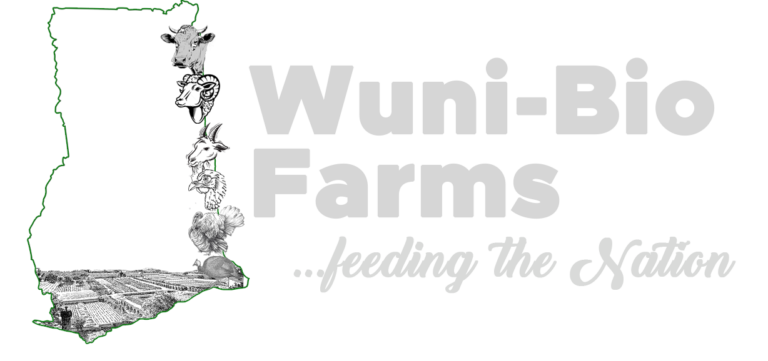OPTIMISING WATER QUALITY FOR INTENSIVE FISH FARMING
Optimizing Water Quality Parameters in Intensive Fish Farming
 Intensive fish farming, also known as aquaculture, has become a vital source of seafood production to meet the growing global demand for fish. In such systems, fish are reared in controlled environments, often in high densities, to maximize production. However, the success of intensive fish farming hinges largely on maintaining optimal water quality parameters. This article delves into the significance of key water q
Intensive fish farming, also known as aquaculture, has become a vital source of seafood production to meet the growing global demand for fish. In such systems, fish are reared in controlled environments, often in high densities, to maximize production. However, the success of intensive fish farming hinges largely on maintaining optimal water quality parameters. This article delves into the significance of key water q uality parameters such as pH, temperature, dissolved oxygen (DO), ammonia, and nitrite, highlighting their importance in ensuring the health and productivity of farmed fish.
uality parameters such as pH, temperature, dissolved oxygen (DO), ammonia, and nitrite, highlighting their importance in ensuring the health and productivity of farmed fish.
1. pH (Acidity-Alkalinity Balance)
One of the fundamental water quality parameters in intensive fish farming is pH, which measures the acidity or alkalinity of water. The pH scale ranges from 0 (highly acidic) to 14 (highly alkaline), with 7 being neutral. Fish are highly sensitive to pH fluctuations, making it crucial to maintain a stable pH level within the appropriate range for the specific fish species being farmed.
Different fish species have varying pH preferences, so it’s essential to research and understand the ideal pH range for your target species. For example, freshwater fish generally thrive in a pH range of 6.5 to 7.5, while some marine species prefer a slightly more alkaline environment, around pH 8.0 to 8.5.
Importance of pH in Fish Farming:
Health and Growth: Fish rely on a stable pH to maintain their internal biochemical processes. Extreme pH levels can stress fish and lead to reduced growth rates or even mortality.
Ammonia Toxicity: pH affects the toxicity of ammonia (NH3). In acidic conditions, ammonia exists in its toxic form (NH3), which can harm fish. As pH rises, ammonia converts to a less toxic ammonium (NH4+). Thus, maintaining the right pH level helps mitigate ammonia toxicity.
Disease Prevention: Fish in pH-stable environments are less susceptible to diseases, as many fish pathogens thrive in pH-fluctuating conditions.
To regulate pH, farmers can use buffering agents to prevent sudden drops or spikes. Regular monitoring and adjustment of pH are vital aspects of fish farm management.
2. Temperature Control
Temperature is another pivotal water quality parameter in intensive fish farming. Fish are ectothermic, meaning their body temperature is regulated by the surrounding water. Maintaining the correct water temperature is crucial for various physiological processes, including digestion, metabolism, and growth.
Importance of Temperature in Fish Farming:
Growth and Development: Fish have temperature preferences depending on their species. Deviations from these preferences can result in slower growth or developmental issues.
Feeding Efficiency: Temperature influences the feeding behavior of fish. Inconsistent temperatures can disrupt feeding patterns and reduce the efficiency of converting feed into biomass.
Disease Susceptibility: Fish stressed by temperature fluctuations are more susceptible to diseases. Furthermore, some pathogens thrive in specific temperature ranges, so maintaining the right temperature can help prevent disease outbreaks.
To manage temperature, fish farmers often use heating or cooling systems. In cold climates, heaters or geothermal sources can be employed, while in warmer regions, cooling mechanisms such as fans, evaporative cooling, or shade structures may be necessary.
3. Dissolved Oxygen (DO)
Dissolved oxygen (DO) is a critical parameter for fish survival, as it directly impacts their respiratory processes. Fish extract oxygen from water through their gills, and insufficient DO levels can lead to hypoxia, a condition where oxygen supply is inadequate for their needs.
Importance of DO in Fish Farming:
Respiration: Fish require oxygen for respiration. Low DO levels can lead to stress, reduced growth, and even death.
Efficiency of Feed Conversion: Adequate DO levels are essential for efficient feed utilization. Fish in well-oxygenated water tend to have better feed conversion ratios.
Preventing Harmful Gas Accumulation: Low DO levels can promote the accumulation of toxic gases like hydrogen sulfide (H2S), which can be lethal to fish.
Maintaining DO levels typically involves aeration systems such as diffusers or paddlewheels, which increase oxygen exchange at the water surface. Regular monitoring of DO levels is essential to ensure that fish receive an adequate oxygen supply.
4. Ammonia (NH3) and Nitrite (NO2-)
Ammonia (NH3) and nitrite (NO2-) are nitrogenous compounds that are toxic to fish when present in excessive amounts. These compounds are produced as byproducts of fish waste, uneaten feed, and decomposition of organic matter in the water.
Importance of Ammonia and Nitrite Monitoring in Fish Farming:
Toxicity: High levels of ammonia and nitrite can harm fish by interfering with their respiration and ion regulation. It can lead to reduced growth, increased susceptibility to diseases, and, in severe cases, fish mortality.
Stress Reduction: Regular monitoring and control of ammonia and nitrite levels help reduce stress on fish, promoting overall health and well-being.
Water Quality Maintenance: Effective removal or conversion of ammonia and nitrite is crucial for maintaining water quality in closed-loop systems.
To manage ammonia and nitrite, biofilters or nitrifying bacteria are often employed. These bacteria convert ammonia to less toxic nitrite and then to nitrate, which is less harmful to fish. Proper system design and regular water testing are essential to prevent ammonia and nitrite buildup.
In conclusion, maintaining optimal water quality parameters, including pH, temperature, dissolved oxygen, ammonia, and nitrite, is paramount in intensive fish farming. These parameters influence fish health, growth, and overall farm productivity. By carefully monitoring and controlling these factors, fish farmers can create a conducive environment for their aquatic livestock, ensuring sustainable and profitable operations in the ever-expanding aquaculture industry.




